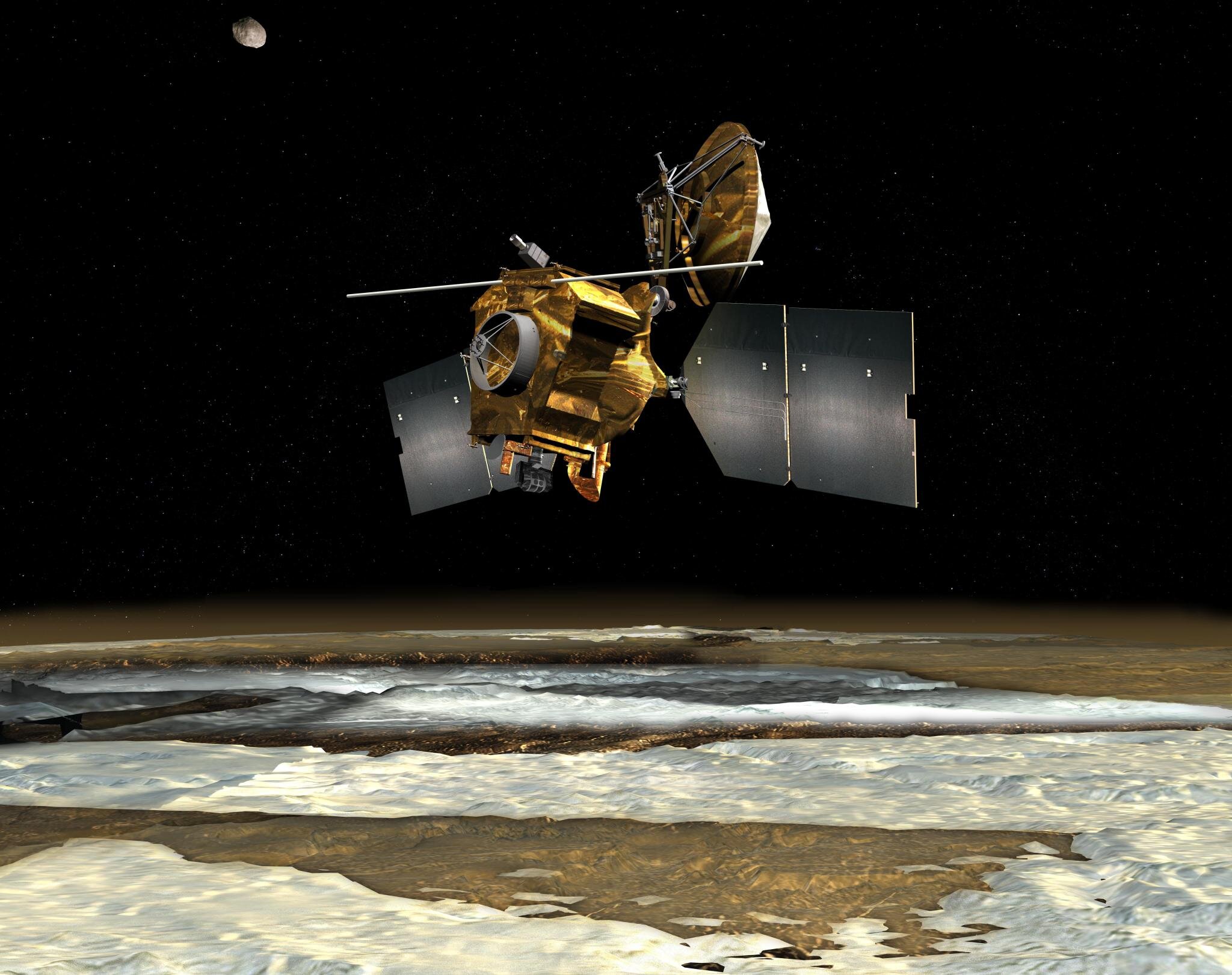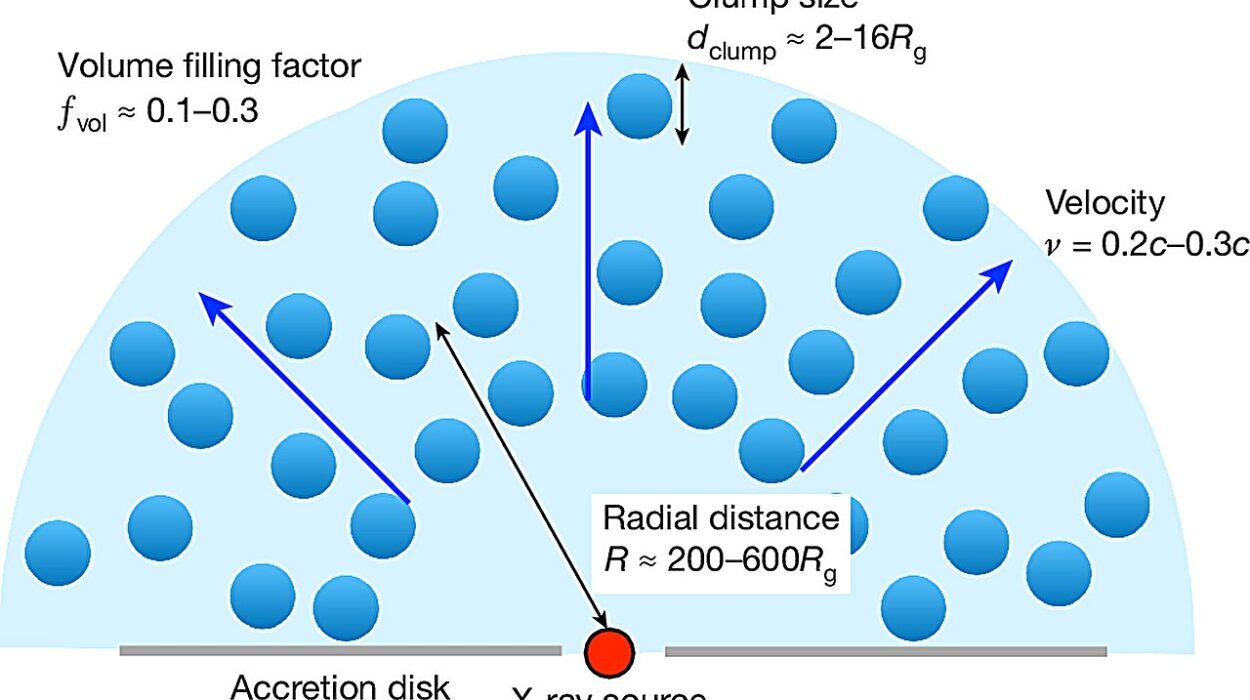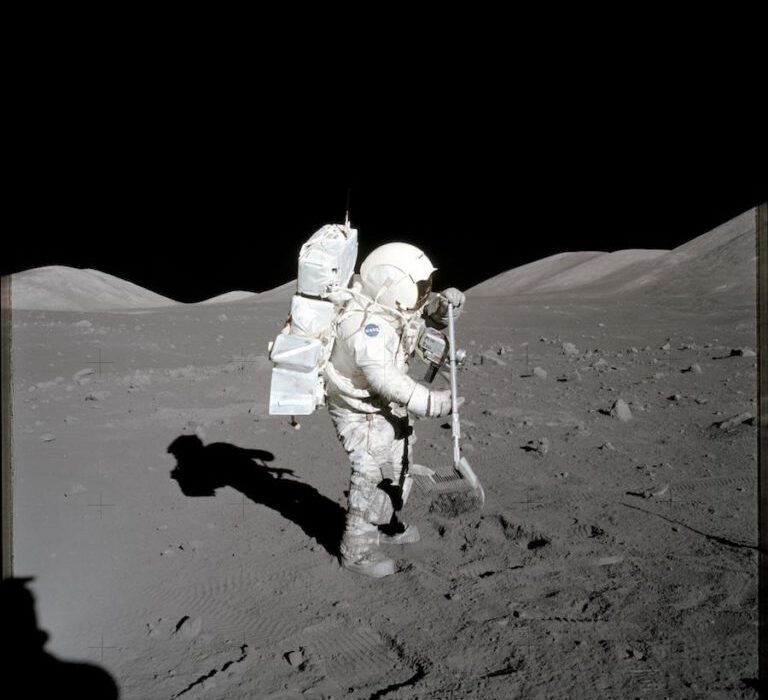Nearly two decades after beginning its journey around the Red Planet, NASA’s Mars Reconnaissance Orbiter (MRO) has pulled off a stunning feat: rolling over nearly upside down to peer deeper beneath Mars than ever before. It’s a maneuver no other mission has attempted quite like this—a 120-degree rotation that allows the orbiter to sharpen its radar vision far below the planet’s dusty surface.
What sounds like an acrobatic stunt in space is actually a carefully orchestrated scientific revolution. The maneuver, dubbed a “very large roll,” is detailed in a new paper published in The Planetary Science Journal. And while it’s not something MRO does every day, the results speak volumes—revealing Martian secrets buried more than a mile beneath the surface.
Teaching an Old Spacecraft New Science
Launched in 2005, the Mars Reconnaissance Orbiter has become one of NASA’s most productive missions, serving not just as a scientific powerhouse but also as a communications hub for rovers and landers. It carries five operating instruments, including cameras, spectrometers, and radar.
From the beginning, MRO was designed with the ability to roll up to 30 degrees in any direction, letting its instruments track surface features such as impact craters or potential landing zones. But that flexibility came with constraints—each instrument has different pointing needs, and one team’s perfect view could compromise another’s.
To handle these competing priorities, mission planners choreograph every roll weeks in advance. Behind the scenes, an intelligent onboard algorithm handles the delicate ballet: directing the spacecraft’s antenna to Earth, adjusting solar arrays to follow the sun, and ensuring each instrument is ready when its moment comes.
But the newest maneuver is something entirely different. The “very large roll” flips MRO by 120 degrees—leaving its communication antenna off-target and its solar panels temporarily misaligned. Risky, yes. But worth it.
A Clearer Window into Mars’s Hidden Ice
The key reason for this daring maneuver lies in a radar instrument called SHARAD, or Shallow Radar. Designed to probe from about half a mile to over a mile (1–2 kilometers) below the surface, SHARAD detects signals that bounce back from underground layers, revealing what’s buried beneath Mars’s rusty soil.
In past years, SHARAD has helped identify deposits of water ice—some tantalizingly close to the surface. These frozen reserves are vital for future human missions, both as a potential water source and as raw material for making rocket fuel.
But SHARAD hasn’t been operating at its full potential.
Because of the orbiter’s design, SHARAD’s radar antenna sits at the back of the spacecraft. That setup gives priority viewing to high-resolution cameras like HiRISE at the front. But the radar signal must pass through parts of the spacecraft before hitting Mars, causing interference that muddies the data.
“The SHARAD instrument was designed for the near-subsurface, and there are select regions of Mars that are just out of reach for us,” said Gareth Morgan, a planetary scientist at the Planetary Science Institute and co-author of the new study. “There is a lot to be gained by taking a closer look at those regions.”
The new 120-degree roll solves that problem. By flipping the spacecraft, SHARAD can send radar signals directly toward Mars with no interference—resulting in images that are up to 10 times clearer than before.
When Rolling Comes at a Cost
Executing such a maneuver in deep space isn’t just a matter of pushing a button. The spacecraft must temporarily stop talking to Earth. Its solar arrays can’t properly track the sun. That means engineers must carefully calculate how much power MRO has in its batteries, how long it can operate without real-time control, and how much risk it can take.
“The very large rolls require a special analysis to make sure we’ll have enough power in our batteries to safely do the roll,” said Reid Thomas, MRO’s project manager at NASA’s Jet Propulsion Laboratory (JPL) in Southern California.
As a result, these complex rolls are rare—currently limited to one or two a year. But the hope is that they will become more routine as engineers refine the planning process.
And the payoff? A clearer understanding of where Martian ice is buried, how it formed, and how accessible it might be for future astronauts. That knowledge is essential not only for survival on Mars, but also for understanding the planet’s climate history—and possibly whether it once harbored life.
Rolling to Save the Eyes on Mars
It’s not just SHARAD that’s benefiting from MRO’s rolling talents. Another instrument, the Mars Climate Sounder (MCS), has found a new lifeline in the orbiter’s standard roll maneuvers.
MCS is a radiometer that monitors the temperature of Mars’s atmosphere, offering crucial insight into how dust storms form and move across the surface. These storms can dramatically alter the Martian landscape, impact rover operations, and pose health risks for future human missions.
Originally, MCS used a built-in gimbal to pivot and track the Martian horizon or look out into space for calibration. But in 2024, that gimbal started to fail.
Rather than retire the instrument, scientists got creative. They began relying on MRO’s standard 30-degree rolls to point MCS in the right directions. What was once a workaround became a new normal.
“Rolling used to restrict our science,” said Armin Kleinboehl, interim principal investigator for Mars Climate Sounder at JPL. “But we’ve incorporated it into our routine planning, both for surface views and calibration.”
Reinventing a Mission While It’s Still Flying
MRO was never designed to roll upside down in space. But then again, it wasn’t supposed to last this long either.
After 18 years and counting, the spacecraft remains in excellent health, thanks to careful engineering and imaginative upgrades. In a sense, the MRO team is performing brain surgery on a robot in orbit—teaching it new moves, rewriting its capabilities, and opening fresh windows into a planet we’ve never stopped dreaming about.
As we prepare for crewed missions to Mars and debate what future Martian cities might look like, missions like MRO quietly keep the dream alive. With every roll, scan, and radar ping, it brings us closer to understanding the alien world next door—and what it might take to call it home.
Reference: Nathaniel E. Putzig et al, SHARAD Illuminates Deeper Martian Subsurface Structures with a Boost from Very Large Rolls of the MRO Spacecraft, The Planetary Science Journal (2025). DOI: 10.3847/PSJ/addbe1






